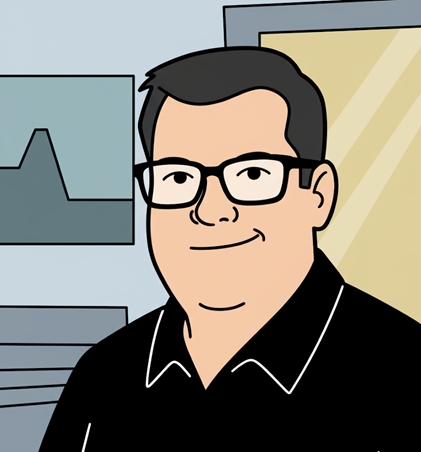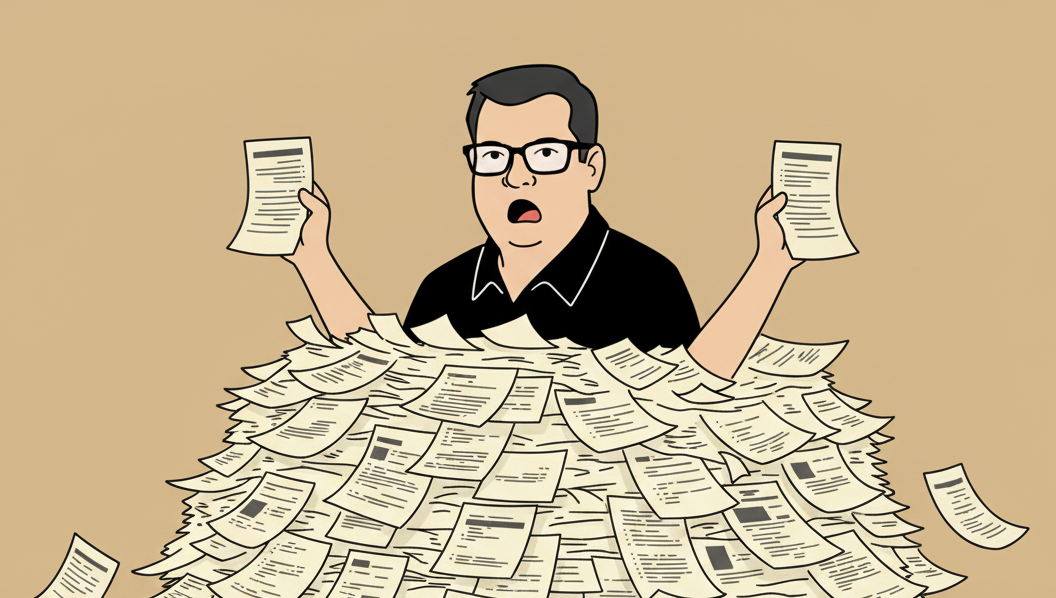This article was originally published on LinkedIn.
In a world where software is eating the world, your resume is no longer just a piece of paper—it's the key that gets you past the gatekeepers and into a human's hands. As a hiring manager and technology executive, I've seen firsthand how the job market has changed, especially with the rise of AI. While there are a ton of free resources out there, I want to give you an inside look from the perspective of someone who actually reads, evaluates, and makes decisions based on these documents.
Software Is the New Gatekeeper
Back in 2011, Marc Andreessen famously said, “software is eating the world.” Fast forward a decade, and that software has evolved into AI, reshaping the economy at a pace we haven't seen since the dot-com boom. Today, the conversation about jobs inevitably goes through software, which means your resume will be inspected, analyzed, and curated by AI.
If you’ve been job hunting since the COVID-19 pandemic, you already know the frustration of dealing with software. Whether it's an Applicant Tracking System (ATS), a scouting tool, or a job site like LinkedIn, understanding who you are as a person has never been more challenging.
This software isn't just a barrier; it's also a tool that's been co-opted by job seekers to create what's known as "AI-slop." Think of tools that generate hidden commands to trick an ATS, others that write perfect-sounding (but often untruthful) resumes for every job, and bots that apply to hundreds of jobs a day. The AI boom has made it harder to get your resume in front of a human, and it’s created a flood of low-quality information that hiring managers have to sift through. It's like you're whispering while a hurricane of chaos screams all around you.
The good news is that you can still master your resume. Due to a complex web of laws and regulations, the resume isn't going away anytime soon. Even if you land a job through in-person networking, you'll still need the paperwork to move forward.
The First Reader of Your Resume Is a Computer
Before a human ever sees your resume, a computer will. This is why making your resume machine-readable is non-negotiable.
There was a time when UX designers and other creative professionals made their resumes visually stunning and unique. This was a great approach until it became clear that these elaborate designs often broke the systems meant to read them. Today, the expectation is that your resume is simple and scannable.
What does that mean for you? Simplicity is your friend.
- If you're using a PDF, make sure the text is clear and readable.
- If you're using Microsoft Word, avoid special characters, non-standard breaks, and embedded images.
- Plain, clearly arranged text is your best bet. You can still use different fonts and styles to make it easy for a human to read, but prioritize machine readability first.
One more thing: check your document's metadata. Make sure there are no stray comments, highlights, or old author information. These small details can show that you’re not just using a generic template, but that you're truly invested in your resume as a reflection of your work.
There are many opinions on the "perfect" resume layout. The most important thing is that your format is simple enough to be quickly updated. Think of your resume as a project you can continuously refine. You can even try A/B testing different versions or setting up a process to quickly tailor it to each job.
Clarity Is the Hardest, Easiest Thing You'll Do
Recruiters and hiring managers spend mere minutes (or even seconds) scanning a resume for keywords and relevant experience. The same goes for an AI-powered ATS—it's all about pattern matching. It compares your resume against the job description and other candidates to find the best fit.
So, what are we looking for? Unfortunately, there’s no one-size-fits-all answer. It depends on the role, the industry, and what the hiring manager needs. In the current economy, we want to see someone who can hit the ground running, with a track record of success that shows they can do the job with minimal training.
No matter the format, your resume needs to showcase your hard skills, portfolio, and network alongside your work experience. It must demonstrate that you are the lowest-risk candidate with the highest potential for a successful outcome.
When it comes to your experience, remember this: people only care about what you've done as an indicator of what you can do for them. What did you improve? What did you make more efficient? What did you create? While descriptive words are great, numbers are even better.
Focus on Outcomes and Skills
It can be tough to quantify your work, especially in government or corporate roles where you were just one part of a large process. This is your chance to dig in and show the tangible results of your efforts.
I recommend using a framework like STAR (Situation, Task, Action, Result). This method helps you describe the context of your work, your specific role, the actions you took, and the measurable outcome. For example, if your job was just taking notes in a meeting, you can still highlight how you improved the process or helped the team reach a decision faster. These are the impacts we’re looking for.
Don't overlook your skills. Make it crystal clear what tools you're proficient in and what professional certifications you have. This information should be easy to find on your resume, not just in your cover letter.
Use Shared Language
When you're exploring new industries, the nuances of language can reveal whether you're a newcomer or a veteran. Your resume's primary job is to get you past the ATS and into a conversation with a human, so every advantage counts.
Make sure your resume speaks to your target audience. A resume for a non-profit will use a different vocabulary than one for a regulated industry like defense or finance. Aligning your language with the specific vertical you're applying to shows that you understand their world.
Let AI Tools Help You, But Don't Let Them Run the Show
I'll say this upfront: don't use AI to write your resume for you. Instead, use it as an accelerator to refine your work.
- Comparison: Use tools to compare your resume against a job description. AI can help you find out if you just need to rephrase an experience or if you're missing a few key skills.
- Outlines, Brainstorming, and Critiques: Use AI as a writing assistant. Ask it to summarize information, brainstorm new ways to describe your experience, or even critique your resume from the perspective of a fatigued recruiter.
For cover letters, you can use AI to identify the most important points in the job description that you should cover. This helps you present your authentic self while showing a prospective employer that you understand their company's objectives.
Ultimately, this is your job. Use AI as a tool to see things from a new perspective, but don't let it be an easy button. You need to know your resume inside and out so you can speak to every point on it.
A Final Note on Online Profiles
While there's a lot of emphasis on platforms like LinkedIn, it is important to cast a wide net. LinkedIn is not just a networking tool; it's a recruiting platform. You can use your profile to reinforce your resume, highlight your portfolio, and bring all of your skills and experience together in one place.
You don’t have to rely on LinkedIn alone. You can use it as a link to your personal portfolio site or a blog. The internet is a powerful tool with many different platforms, so use them to your advantage.
The more you leverage your network, skills, and portfolio, the less your resume will be the only way to get a conversation with a person. Stay tuned for my next post where we'll explore those other areas in more detail.
Have you used AI tools to improve your resume? What worked for you? Let me know in the comments!

